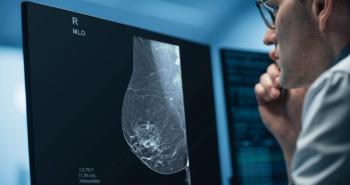Adding digital breast tomosynthesis to conventional 2D screening mammography improves reading specificity, particularly for radiologists with less than 10 years experience. According to a retrospective study published in Radiology, all radiologists and advanced practitioner radiographers tested saw an improvement in reading specificity when digital breast tomosynthesis (DBT) was used in conjunction with 2D screening mammography. Researchers analyzed data from the TOMMY trial, a comparison of tomosynthesis with digital mammography in the UK National Health Service Breast Screening Program. Nearly 8,900 women, ages 29 to 85, participated between July 2011 and March 2013. A data set of 7,060 was created and randomly allocated for independent, blinded review of 2D mammograms, DBT images and 2D mammograms, and synthetic 2D mammograms and DBT Images. Image readers didn't have access to previous images. Readers -- radiologists, advanced practitioner radiographers, and two breast clinicians -- had between 3-25 years of experience in the UK Breast Screening Program and had read between 5,000-13,000 cases annually. Ten years was the average experience level, and the average number of cases read annually was 8,000. Ten years' experiencee was used as the cutoff point for making reader performance comparisons. Data analysis revealed DBT addition improved reading specificity for everyone -- 56% vs 68% and 49% vs 67% for radiologists and advanced practitioner radiographer, respectively, and 46% vs. 55% for breast clinicians. Reading sensitivity improved for 19 of 24 readers and was significantly higher for those with less than 10 years' experience (91% vs. 86%) and for those with career mammographic of fewer than 80,000 cases.





























